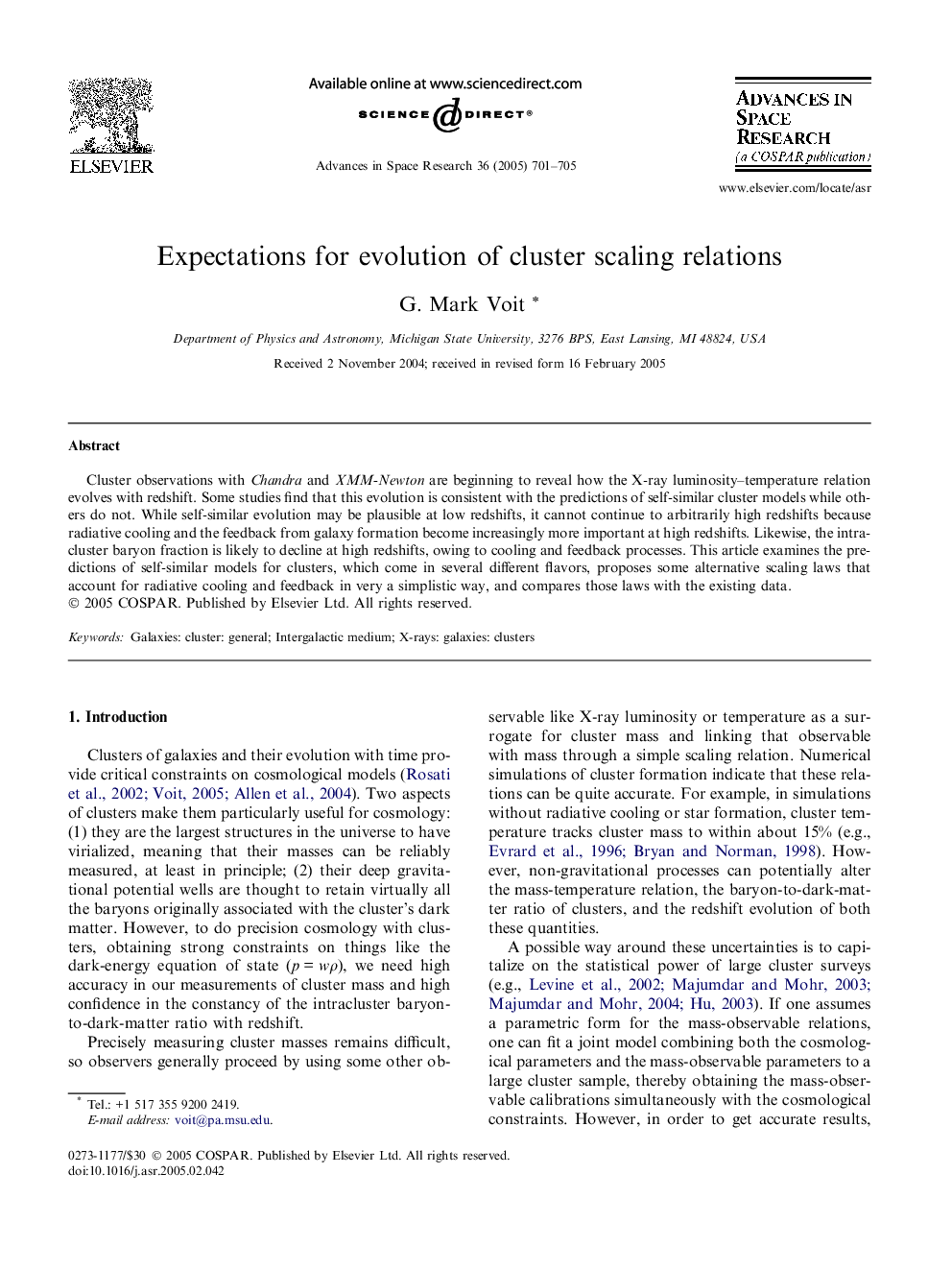| Article ID | Journal | Published Year | Pages | File Type |
|---|---|---|---|---|
| 10694523 | Advances in Space Research | 2005 | 5 Pages |
Abstract
Cluster observations with Chandra and XMM-Newton are beginning to reveal how the X-ray luminosity-temperature relation evolves with redshift. Some studies find that this evolution is consistent with the predictions of self-similar cluster models while others do not. While self-similar evolution may be plausible at low redshifts, it cannot continue to arbitrarily high redshifts because radiative cooling and the feedback from galaxy formation become increasingly more important at high redshifts. Likewise, the intracluster baryon fraction is likely to decline at high redshifts, owing to cooling and feedback processes. This article examines the predictions of self-similar models for clusters, which come in several different flavors, proposes some alternative scaling laws that account for radiative cooling and feedback in very a simplistic way, and compares those laws with the existing data.
Related Topics
Physical Sciences and Engineering
Earth and Planetary Sciences
Space and Planetary Science
Authors
G. Mark Voit,
